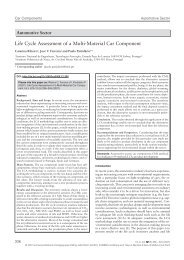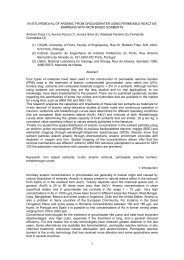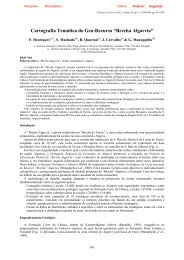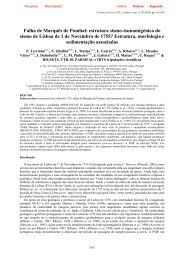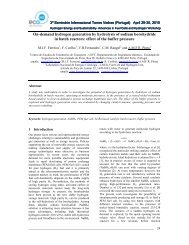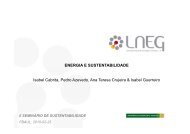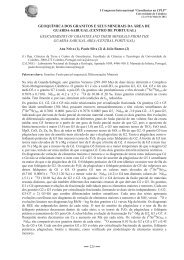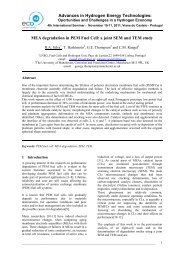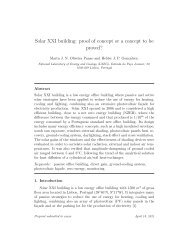Load Matching and Grid Interaction of Net Zero Energy Buildings
Load Matching and Grid Interaction of Net Zero Energy Buildings
Load Matching and Grid Interaction of Net Zero Energy Buildings
You also want an ePaper? Increase the reach of your titles
YUMPU automatically turns print PDFs into web optimized ePapers that Google loves.
level to characterise the major differences between projects <strong>and</strong> solution sets. The monthly dataconsequently address the seasonal effects, reflecting the mismatch <strong>of</strong> load <strong>and</strong> generation due tobuilding energy st<strong>and</strong>ard, system sizing <strong>and</strong> climate. Differences between projects are found to besmaller for higher resolution data as long as no on-site battery storage is applied. Indices will be testedwith further project data <strong>and</strong> introduced into the harmonized IEA SHCP Task40/ECBCS Annex 52definition framework. In the context <strong>of</strong> the smart grid development high resolution indices describingthe interaction <strong>of</strong> on-site generation, building load <strong>and</strong> grid might be considered relevant in future.6. AcknowledgementsThe work presented in this paper has been largely developed in the context <strong>of</strong> the joint IEA SHCTask40/ECBCS Annex52: Towards <strong>Net</strong> <strong>Zero</strong> <strong>Energy</strong> Solar <strong>Buildings</strong>. The German contribution hasbeen funded by the Federal Ministry <strong>of</strong> Economy <strong>and</strong> Technology within the program for energyoptimized building (EnOB).References[1] Goetzberger, A, et. al., The Self-Sufficient Solar House Freiburg, Advances in Solar <strong>Energy</strong>, vol. 9, p.1-70,1994[2] Heinze, M., Voss, K. (2009) Goal: <strong>Zero</strong> <strong>Energy</strong> Building -Exemplary Experience Based on the Solar EstateSolarsiedlung Freiburg am Schlierberg, Germany, Journal <strong>of</strong> Green Building, vol. 4, nr. 4.[3] EPBD recast (2010), Directive <strong>of</strong> the European Parliament <strong>and</strong> <strong>of</strong> the Council on the energy performance <strong>of</strong>buildings (recast), adopted by the Council on 14/04/2010, Brussels, 2008/0223 (COD).[4] US DOE (2008), Building Technologies Program, Planned Program Activities for 2008-2012, Department Of<strong>Energy</strong>, US, http://www1.eere.energy.gov/buildings/mypp.html (downloaded .01/07/2010)[5] Task 40/Anenx 52 (2008), Towards <strong>Net</strong> <strong>Zero</strong> <strong>Energy</strong> Solar <strong>Buildings</strong>, IEA SHC Task 40 <strong>and</strong> ECBCS Annex52, http://www.iea-shc.org/task40/index.html, accessed 10/12/2009.[6] Marszal, A. <strong>and</strong> Heiselberg, P. (2009), A literature review on ZEB definitions, Aalborg University (DK).[7] Sartori, I., C<strong>and</strong>anedo, J., Geier, S., Lollini, R., Athienitis, A., Garde, F. <strong>and</strong> Pagliano, L. (2010), Comfort <strong>and</strong><strong>Energy</strong> Performance Recommendations for <strong>Net</strong> <strong>Zero</strong> <strong>Energy</strong> <strong>Buildings</strong>, In the Proceedings <strong>of</strong> EuroSun2010, Graz, AT.[8] Sartori, I., Napolitano, A., Marszal, A., Pless, S., Torcellini, P. <strong>and</strong> Voss, K.: Criteria for Definition <strong>of</strong> <strong>Net</strong><strong>Zero</strong> <strong>Energy</strong> <strong>Buildings</strong>, In the Proceedings <strong>of</strong> EuroSun 2010, Graz, AT.[9] www.sdeurope.org, www.solardecathlon.gov[10] Widén, J., Wäckelgard, E., Lund, P.D.: Options for improving the load match capability <strong>of</strong> distributedphotovoltaics: Methodology <strong>and</strong> applications to high-latitude data, Solar <strong>Energy</strong> Journal, vol. 83, 2009[11] Widén, J.: Value <strong>of</strong> on-site electricity generation – example calculations with different types <strong>of</strong> metering foran individual household, Uppsala University, Dep. Of Engineering & Science, working document, 2010[12] Baetens, R., De Coninck, R., Helsen, L. Saelens, D.: The impact <strong>of</strong> domestic load pr<strong>of</strong>iles on the gridinteraction<strong>of</strong> building integrated photovoltaic (BIPV) systems in extremely low-energy dwellings, InProceedings <strong>of</strong> the Renewable <strong>Energy</strong> Research Conference 2010, 7-8 June, Trondheim, Norway.[13] Gonçalves H. et al: Solar XXI - Towards <strong>Zero</strong> <strong>Energy</strong>, ©LNEG 2010 (IBSN: 978-989-675-007-7),download: www.lneg.pt/iedt/?unidade=17695[14] Pless, S., Torcellini, P.: <strong>Energy</strong> Performance Evaluation <strong>of</strong> a Low-<strong>Energy</strong> Academic Building, 2006ASHRAE Winter Meeting Chicago, Illinois, January 21–25, 2006[15] Cremers, J. Voss, K., Rexroth, S., Wehner, M.: The German contribution to the Solar Decathlon Europe2010 – A comparison <strong>of</strong> four net zero energy building prototypes monitored under equal conditions, In theProceedings <strong>of</strong> EuroSun 2010, Graz, AT.




